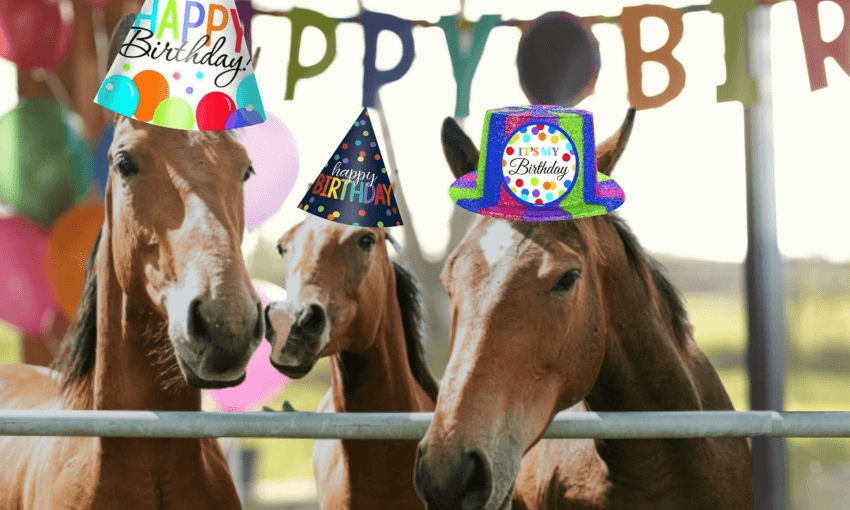Break out the carrot cake. Thoroughbred race horses in this half of the world all just turned a year older. That’s right. All thoroughbreds have the same birthday. Mirjam Guesgen explains why.
Some get a deep tissue massage, some eat cake, others just chill out and take a break from racing for the day. However they celebrate, New Zealand’s race horses all share the same birthday of August 1. In fact, all thoroughbreds in the southern hemisphere have the same birthday. In the northern hemisphere it’s January 1 instead.
This is not down to some fluke of biology, however; it’s about racing. Thoroughbreds race in different classes based on their age, the youngest being two years old or yearlings. So that horses aren’t entering racing all at different times of year, they get given the same birthday, which coincides with the start of the race year on the same day. It’s the horse equivalent of new entrants’ class at some primary schools.
“Many of our key racing events are age group races and if horses had random birthdays this would be hugely difficult to track,” said a spokesperson from NZTR.
While the foals aren’t all born on the same day, breeders try to get their mare to foal as close to that date as possible. You don’t want to be the runt foal born in November who’ll be a few months behind their August mates come race time.
The birthday rule used to be much harsher. Up until two decades ago, foals born before August 1 turned one year old on that date. Born on July 31? Turn a year old a day later. That meant some early births were being hidden away in bushes at the back of farms until August 1 rolled around.
Now there’s more leeway and foals born from around mid-July get assigned the August birthday.
The reason for August is to match up with a horse’s breeding cycle. Thoroughbreds are bred the old-fashioned way, without artificial insemination. Mares will typically want to get frisky in spring, around September, when the weather warms up. Factor in that a mare will gestate for around 11 months and, ba-da-bing, August birthday it is!
Going with the flow has its advantages. There’s a tale of British racehorse Signorinetta, who was the lovechild of two horses that, by regular breeding practices, should never have been mated. Her breeder threw the rulebook out the window because Signorinetta’s mum and dad would neigh to each other. The breeder decided they were in love and let them do their thing. In 1908 Signorinetta won the Derby at 100-1 odds.
The youngest a horse can race is two years old. That might seem like a baby in human terms but foals grow amazingly fast in their first year of life and some evidence suggests that exercise early on actually has a positive effect for the horses and lengthens out their racing career.
And it’s not all about treating the horses like economic units, they insist. Many horses are pampered on their birthdays, donning party hats, getting horse treats, carrot cake or massages. Plus NZTR recently adopted new guidelines to make sure their animals live lives worth living right from the get go.
But there are exceptions to the August birthday rule. Standardbred horses, the ones who compete in harness racing, recently had their birthdays changed from August 1 to January 1. So no carrots or candles for them last Sunday.
According to the NZ Standardbred Breeders’ Association, that’s to boost the number of eligible racing horses, line up with the racing calendars of other countries and to give the horses more time to figure out how to race.



